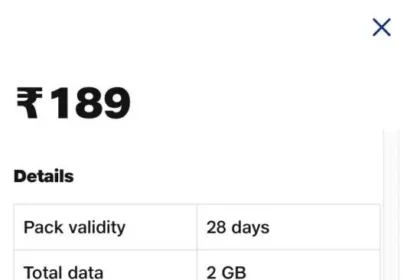Introduction
Reliance Industries and global investment behemoth BlackRock have partnered to set up Jio BlackRock Mutual Fund, with the aim of democratizing investing in India through low-cost, technology-led solutions. Their collaboration is a big push in India’s asset management segment, particularly with a retail investor focus and digital-first experiences.
On July 1, 2025, Jio BlackRock began selling its initial range of mutual fund offerings—three debt-based New Fund Offers (NFOs): a Liquid Fund, a Money Market Fund, and an Overnight Fund. All three are open-ended debt schemes meant to provide short-term, low-risk investments for individuals looking for alternatives to savings and fixed deposits.

One of the best aspects of this launch is the low entry level. Investors can start with just Rs. 500, either as a lump sum or in the form of a monthly SIP (Systematic Investment Plan). It is thus affordable for first-time investors, students, young working professionals, or anyone who has money lying idle and wants to invest it in safe, liquid assets with better yield potential than bank savings.
What Are NFOs (New Fund Offers)?
New Fund Offers, or NFOs, are the initial subscription offers of a new mutual fund scheme introduced by an Asset Management Company (AMC). They are the mutual fund version of an IPO in the stock market. When a fund house launches a new scheme, it creates a short window of time—anywhere from a few days—during which the units are available for purchase at a predetermined price, say Rs. 10 per unit.
NFOs are different from other mutual funds in one fundamental respect: they have no track record to consider. While normal mutual funds provide investors with access to history, such as returns, volatility, and fund manager performance, NFOs begin afresh. Investors are investing in a new approach based on the fund’s purpose, asset allocation strategy, and the name of the fund house or its managers.
Despite this, NFOs gain traction as they tend to be launched with low entry levels, new investment themes, or new ways of doing things. For Jio BlackRock’s NFOs, the attraction is low-risk debt funds with low investment costs, and therefore, they suit investors who are new to mutual fund investment or want to invest short-term idle funds efficiently.
About the 3 New Jio BlackRock Debt NFOs
Jio BlackRock’s three new debt mutual fund schemes are targeted at risk-averse investors seeking safe and short-term investments. Each scheme has a distinct strategy in terms of maturity period and risk profile.
The Liquid Fund invests in money market instruments and debt with a maximum maturity period of up to 91 days. It is best used for those who want to park emergency funds or surplus idle money temporarily but at a rate of return higher than a savings account. This fund does come with a graded exit load—if you seek redemption within the first 7 days, there is a minimal cost, which is tailed off day by day and is zero after one week. It’s best for those who are able to leave the money alone for a minimum of a few days.
The Money Market Fund targets instruments with a maturity of one year or less. It’s aimed at investors seeking a mix of stability and higher returns. It’s ideal for short-term financial objectives, like budgeting for a vacation or soon-to-be-incurred expenses. One of its major benefits is that there’s no exit load, with full flexibility to withdraw when required without paying any penalty.
The most conservative of the three is the Overnight Fund, which invests in instruments with a maturity of one business day. Its objective is to provide returns akin to overnight call rates with minimum risk. With instant liquidity and no exit load, this fund is particularly ideal for ultra-conservative investors who want capital safety first and quick access to their funds—basically, a digital locker for your cash.
How to Invest with Just Rs. 500
Investing in Jio BlackRock’s new debt mutual funds is easy, accessible, and suitable for all—including first-time investors. You can begin with just Rs. 500, making it one of the most cost-effective ways to enter the world of mutual funds.
This may be the official Jio BlackRock Mutual Fund website itself or third-party investment platforms such as Zerodha, Groww, Paytm Money, Upstox, and more that facilitate mutual fund transactions.
Then, surf through the listed NFOs and choose the type of fund most suited to your objectives—Liquid Fund for emergency corpus, Money Market Fund for short-term needs, or Overnight Fund for super-safe parking of cash. Type in the amount you want to invest—Rs. 500 is the minimum, one-time lump-sum or a recurring SIP (Systematic Investment Plan).
Once the NFO period ends and the funds are distributed (typically within five working days), your investment will become a normal open-ended scheme. You may view the performance through your investment app or dashboard, add further contributions, or redeem the units as you require.
Who Should Consider These Funds?
These fresh Jio BlackRock debt funds are especially suited to investors who value safety, ease, and short-term financial planning.
- They are ideal starting points for first-time investors who wish to test the waters of mutual funds without exposing themselves to undue risk. Clear-cut fund objectives, these NFOs enable starters to try their hand at mutual funds without putting in big money.
- Individuals wishing to temporarily park excess funds—i.e., bonuses, emergency funds, or idle cash awaiting future utilization—may take advantage of Liquid or Money Market Funds. These enable one to earn short-term returns with greater liquidity and hopefully superior returns compared to having the money deposited into a standard savings account.
- Anyone looking for a fixed deposit (FD) alternative or savings account might appreciate these funds. They offer more flexibility, no lock-in except graded exit load for Liquid Fund, and, in some instances, returns that surpass the old short-term bank products—all with the convenience of being easily accessed and managed online.
Pros and Cons
- One of the most significant benefits of these Jio BlackRock debt NFOs is their low entry point. With a minimum investment of only Rs. 500, they’re open to nearly everyone—students, young professionals, or small savers who would otherwise be excluded from investment products.
- These are also very liquid, particularly the Money Market and Overnight Funds, which do not require investors to exit with a penalty. This renders them suitable for short-term purposes or unexpected expenses.
- There are some limitations that one needs to look into. As Jio BlackRock is a new AMC, such funds lack a history to pass a verdict on previous performance and consistency. The fund managers are experienced, the overall performance record of the brand has not yet been created.
- The Liquid Fund has a graded exit load, so if you take money out in the first week, you pay a small charge. This is less flexible over the very short term than Overnight Funds.
- While safer than equity funds, they are still market-linked returns, which means there is no guarantee like a fixed deposit. Returns can be marginally different based on the movement of interest rates and market conditions.
Conclusion
Jio BlackRock’s introduction of three new debt mutual fund NFOs is a big step towards the democratization of short-term investing, particularly among retail investors. With an entry point of as low as Rs. 500, these funds remove the entry barrier while providing professionally managed, low-risk vehicles for parking idle resources.
Each of the Liquid Fund, Money Market Fund, and Overnight Fund addresses specific short-term requirements—ranging from rainy day savings to ultra-conservative capital protection. With 5–6% expected returns and different degrees of liquidity, they offer a choice over conventional bank deposits or fixed deposits, particularly for clients interested in marginally higher returns without exposing themselves to equity market risk.
These funds are best suited for first-time investors, conservative investors, and anyone who needs to manage short-term funds effectively. Although the risk is minimal, returns are linked to the market and are not guaranteed.
It’s always wise to evaluate your financial objectives, time horizon, and liquidity requirements before investing. These NFOs can be a good starting point for mutual funds—but only as part of your financial plan.
FAQs
- What is the minimum investment in these Jio BlackRock funds?
You can invest as a one-time lump sum or through a monthly SIP (Systematic Investment Plan).
- Can I withdraw my money at any time?
Yes, all three funds are open-ended so that you can redeem them at any time. However, the Liquid Fund has an exit load if withdrawn within 7 days.
- Which fund is the safest among the three?
Overnight Fund is the safest, as it invests in overnight securities and has negligible interest rate or credit risk.
- Are returns assured like fixed deposits?
No, returns are market-linked and not assured. Yet, these funds provide stable, low-risk returns, normally 5–6%.
- How long should I remain invested in each fund?
- Overnight Fund: 1–3 days
- Liquid Fund: 1 week to 3 months
- Money Market Fund: 3–12 months
- Select according to your needs for cash flows.
- Are they better than a savings account?
Generally, yes. They provide higher returns with the same or slightly better liquidity and safety, particularly the Overnight and Liquid Funds.
- Is it safe to invest in a new AMC such as Jio BlackRock?
Though the AMC is new, it’s guaranteed by Reliance and BlackRock, two familiar names. Nevertheless, being a new entrant, it does not have a long-term performance history.
- Where do I invest these NFOs?
You can invest via the Jio BlackRock site, apps such as Zerodha Coin, Groww, Paytm Money, or other mutual fund distributors.
- Will I receive dividends from these funds?
No, these NFOs do not provide the “Direct “Plan-Growth option, so earnings are not distributed as dividends but are instead reinvested and incorporated into the NAV (Net Asset Value).
- Are these funds taxed?
These are debt funds; hence, the taxation varies based on how long you keep them:
- Short-term (≤ 3 years): Taxed according to your income slab
- Long-term (> 3 years): Taxed at 20% with benefits of indexation (according to present rules)







